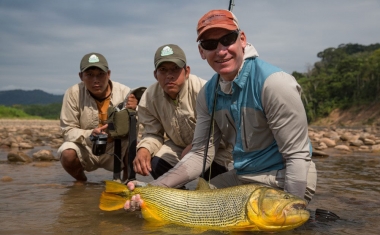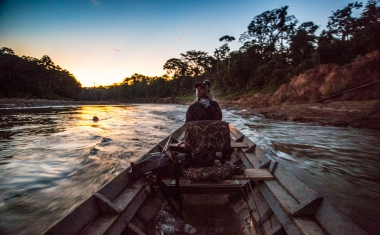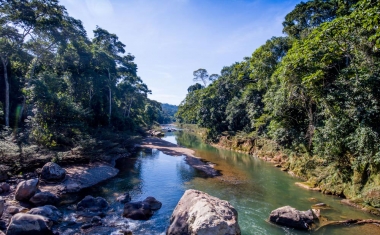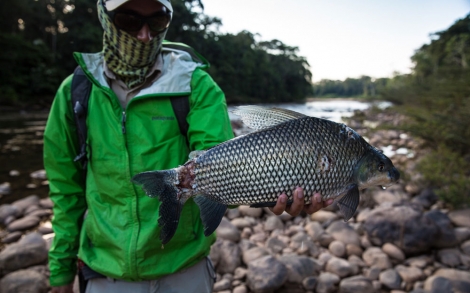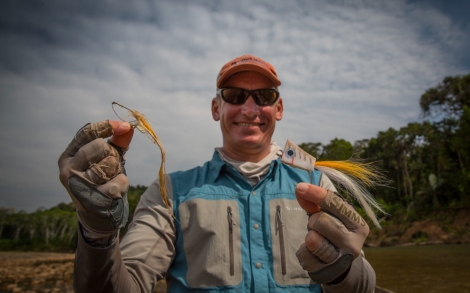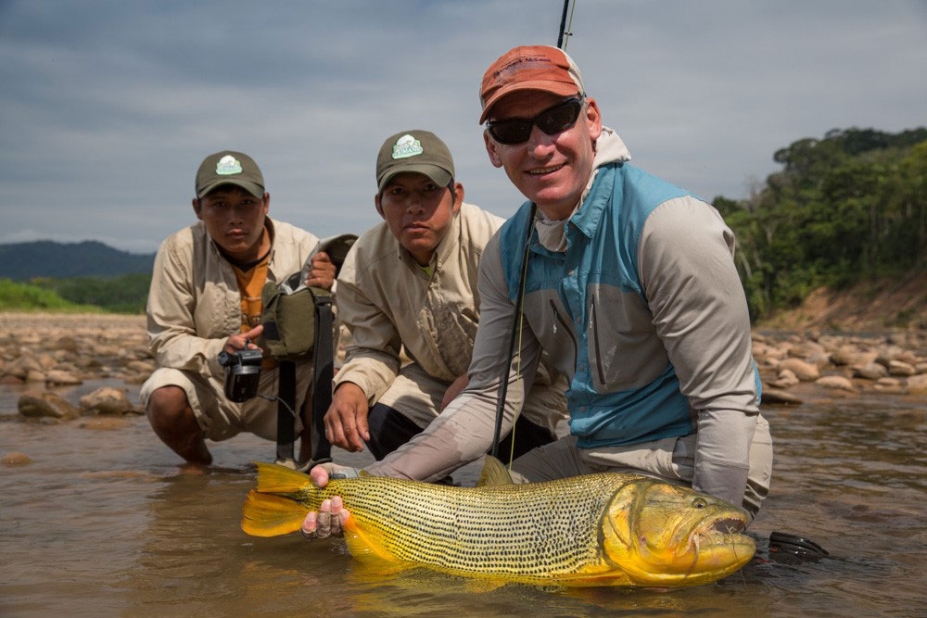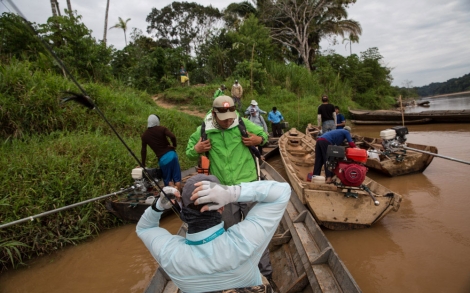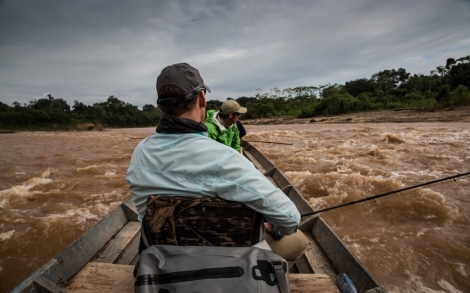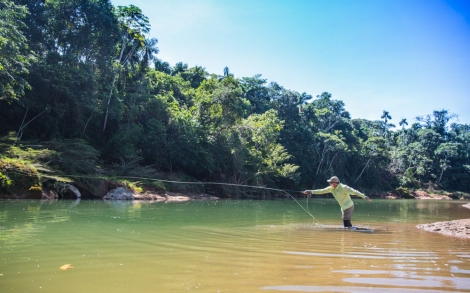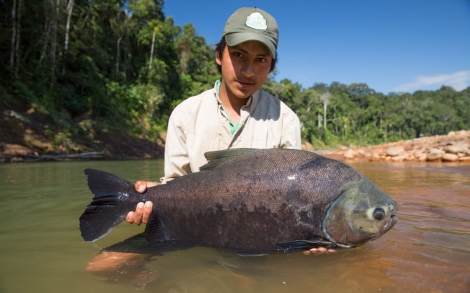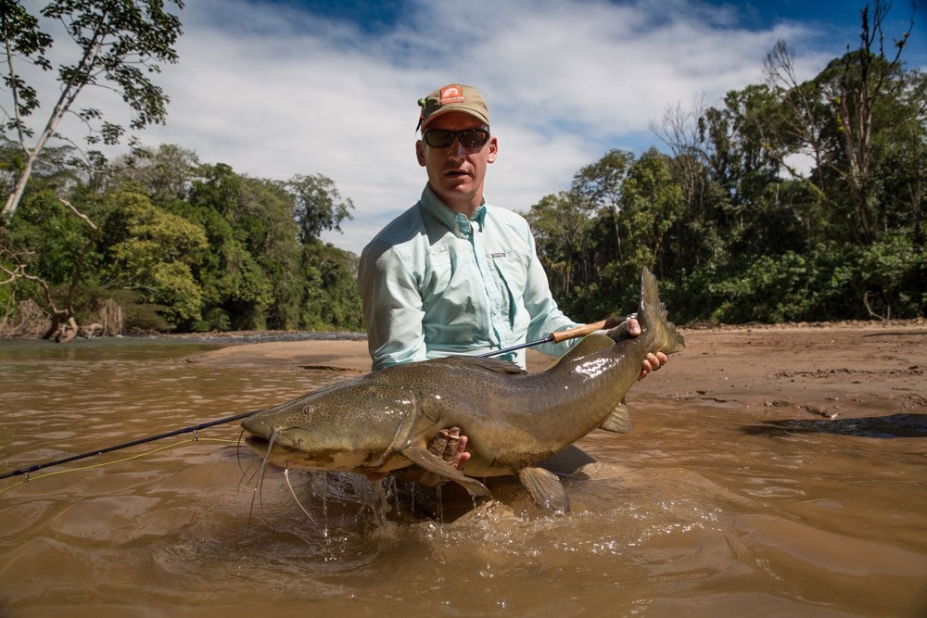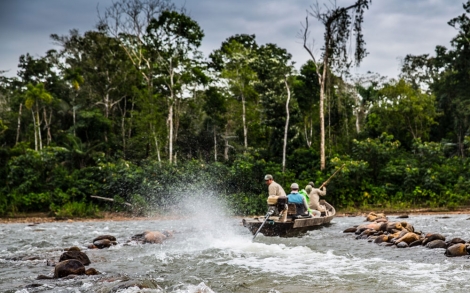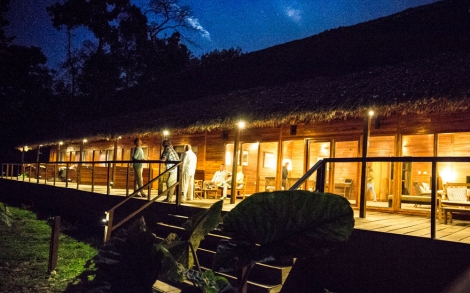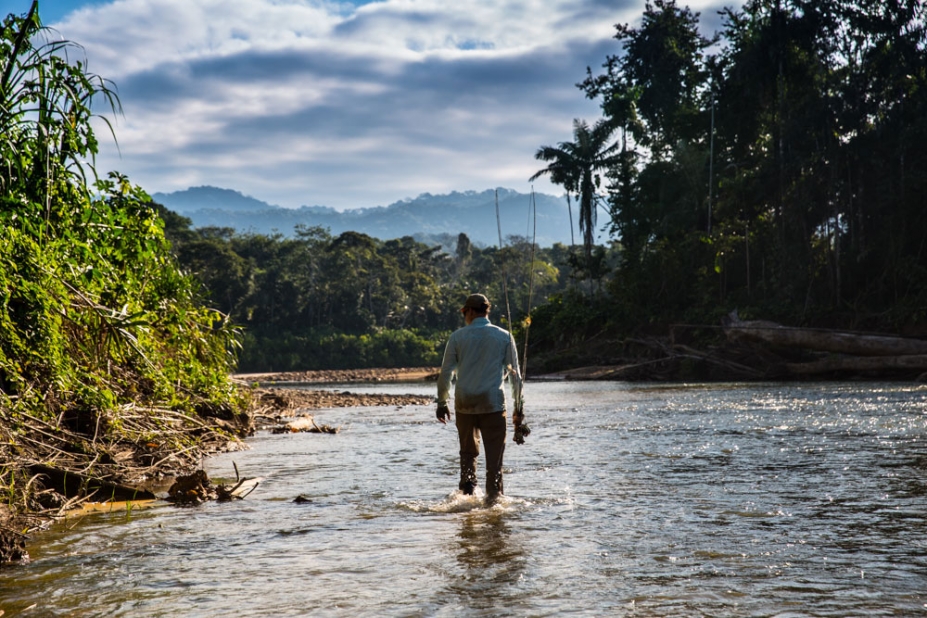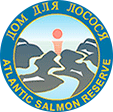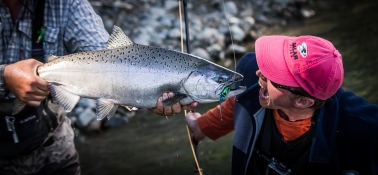It was our 4th day fishing at Tsimane. Marcus and I had already seen and caught some incredible fish. The fishing and environment of Tsimane had delivered not just what it said on the label but a whole lot more. Each day brought about a completely different and unique experience with too many tales to tell. However to draw on one incident hopefully it will encapsulate what is both so special and so incredible about this amazing river system, set deep in the Amazonian jungle at the foothills of the Andes.
Golden Dorado or more accurately just Dorado (as the name itself means gold), whilst they are not the apex predator in this food-chain, they are unquestionably the most spectacular. Their mesmerising golden flanks seem to stand at absolute odds with their defining predatory characteristics. For the most part, this calls on Dorado to ambush their prey from hiding positions, whether that be in the midst of fast flowing water or underwater structures, both trees and rock formations.
Dorado have mouths that have a frontal row of razor-sharp teeth. Razor sharp can be a rather over-used term but with Dorado, it is an understatement. At the business end of a Dorado, this toothy arsenal is easily capable of removing errant fingers from unwary anglers. To sabalo, the primary food source of Dorado, a baitfish that is commonly around the 1lb range but can be quite a bit larger, a full frontal Dorado attack is as devastating as any modern day battlefield weapon on an unsuspecting enemy!!
We were heading upstream on the Pluma river, travelling by canoe and no more than five minutes from the lodge which is situated on a high bluff hopefully now immune to monsoon floods (the two previous lodges were washed away). As we rounded a bend the flicker of golden fins caught the eye, just above a short stretch of fast water in no more than 20cm of water. A shoal of sabalo had found themselves pinned against the shore by a pack of hunting Dorado. I cannot help but wonder if the mesmerizing golden flanks, that seem so out of place with the colours of a normal ambush predator, are designed to provide a flickering wall of colour to confuse and corral the sabalo.
Partial escape by a Sabalo!! - Before & after...the NYAP takes a beating
Moments later the otherwise glassy smooth water erupted into a churning, frothing mass of activity, the likes of which you would only ever expect to see from a sardine bait-ball being attacked by the likes of Tuna or Jacks in the ocean. The ferocity of the assault by maybe half a dozen or more large Dorado was an astonishing sight. It appeared quite literally as if chunks of Sabalo were being torn off with pieces hurled into the air. The only way to do descriptive justice to what was unfolding would be to envisage operating a food blender without the lid on!!
This attack lasted for maybe a full minute, enough time for Marcus to leap from the canoe, run to the edge of the disturbance and cast his NYAP (Not Your Average Popper) into the area just as the waters surface started to flatten. Although the violence was subsiding the feeding switch had not yet turned off and an immediate strike, followed by a missed hook set, followed by another cast and a Dorado in the mid 20lb’s range was leaping and removing line in equal measure. Although it was not always easy to be in position to cast a fly into one of these feeding frenzies, this sort of incident was a daily sight up and down the river, although particularly on the upper sections of the Pluma and tributaries where the Dorado hunted the sabalo in thinner water.
A fabulous Dorado for the fishing book but over and above an incredible spectacle
Rewinding the clock the day we were due to fly into Tsimane from Santa Cruz some very unsettled weather meant that after a few hours delay our outbound flight was cancelled. Safety very sensibly over-ruled any ill-advised plan to get to the river. We were booked back into Tajibos 5 star hotel and enjoyed a simply outstanding dinner at the local but stylish sushi orientated restaurant. The following day much clearer conditions prevailed. A ‘dawn’ start was arranged that allowed us to be on the river by early morning and so benefit from almost a full days fishing with very little lost from the original schedule. The adventure really begun on the flight in as we descended from the clouds to see a small grass airstrip cut out of the exceptionally dense jungle and alongside Tsimane village on the banks of the Pluma. Tsimane is the name of the native Indian community who directly benefit from what is very much a co-operative venture, as well as providing camp staff and local guides whose ability to spot fish far exceeds even the best-trained ‘western eyes’.
The heavy rains had added quite significant colour to the lower sections of the river. To an uneducated eye, enough to suggest that the fishing was all but hopeless. As our team of five met up for lunch, Chad was the first to deliver a story to race anxious angler hearts! Retrieving a large fly fished deep, as the fly was nearing its final retrieve a violent unseen force demolished it. An aggressive strip strike by Chad set the hook followed by the very swift removal of his entire fly line, seemingly oblivious to the maximum pressure he could apply. The fish disappeared downstream followed by significant amounts of backing before the fly-line snapped and he was left to spool up the remnants!
Day 1 - Water clarity was not exactly fabulous but the Dorado were still taking!
With each day the rivers ran progressively clearer. What became apparent as the week went on was that although to my mind the fishing was more exciting and visual on the upper beats, some of which ran with crystal clarity, the colour in the water was not an impediment to the fishing. Dorado strike as much on movement as they do on sight and flies that ‘pushed’ water seemed to be very effective where the visibility was poor.
As water clarity improves, which it typically does as the season progresses not withstanding any rainfall along the way, it becomes increasingly important to adopt a more stealthy approach, especially on the tributaries with clearer water. In that respect the start of the season in July can offer anglers easier chances, particularly with the bigger fish. Although there are some resident Dorado most are migratory following the huge migration of sabalo upriver. This is well underway in July but by August & September the upper river where the lodge is located is packed with both Sabalo and ‘ALL’ the Dorado. The quid pro quo is that although there are more fish they are spookier.
Tsimane is not solely about Dorado. Pacu are one of the other indigenous gamefish to the Amazon. Omnivorous amongst other things they feed hungrily on fruits that drop into the river from overhanging trees. They almost exclusively inhabit the slow deeper runs and their dark shapes can very often be clearly seen against the sandy bottom. Spherical green or brown weighted ‘fruit’ flies are the fly-anglers best chance. Cast out they are then allowed to gently sink as they float downstream with the river current. A very very slow retrieve can be used.
As with Dorado they require a firm strip strike to set the hook. Their teeth more closely resemble human molars and are unbelievably strong, in my case bending the shank of the hook almost at right angles. Markus having secured the first Pacu on an imitation fruit fly we then switched to use the real thing, threading a fruit onto a hook whilst still using a fly rod. Technically cheating…neither of us remotely cared as these fish are enormously strong and put up a fabulous fight. Neither are they small.
A typical slow moving pool with overhanging branches perfect for Pacu. It was possible to spot these fish
Then there are the catfish. The most beautiful is the Surubi and although hard to entice to a fly, given the right conditions it is possible. Although for the most part they also inhabit the lower deeper pools they will also hunt in the shallows in a similar way to Dorado. Conditions are best when the water is coloured so the deluge prior to our arrival worked firmly to our advantage.
At the top of the aquatic food chain, outside of the various species of caiman and crocodiles (who are content to keep themselves to themselves) are giant Muturo catfish. This was almost certainly the culprit who removed Chad’s line on day one, the very dirty water creating one of the few conditions when these enormous fish will take a fly.
Having watched the numerous films from Tsimane, some showing Indians shooting fish, I had errantly assumed that this was a fairly staged activity done for the cameras. It was not. Each day our two native guides, accompanying our Argentinean guide and translator, would come equipped with bow and arrows. As we stalked our way upriver they as often as not paralleled us, shooting Sabalo with impressive accuracy whenever an opportunity presented itself. Dorado are very much revered and 100% off the native menu however Sabalo are the primary food source for the natives as much as they are for the Dorado and other predators in the river.
The temptation of a Maturo using something more enticing than feathers sounded like too good an opportunity! Freshly shot Sabalo, threaded to a good sized hook and launched rather than cast from a fly rod was an easy choice. After no more than 10 mins the loop of loose line started threading its way through the rings followed by full contact with a very very large fish (although by no means super-sized for these monsters). A brutal and dogged fight ensued until finally out of the depths a dark swirling mass appeared. At this point things got a little out of control with both Markus and Ankel our native guide ending up diving head-first (Markus inadvertently, Ankel literally) as they desperately tried to secure the monster as the line snapped and it disappeared into the murk! A size of 150lbs was mentioned!
Maruto Catfish...one of the smaller ones that made it to the camera!
Over the week fishing styles ranged from a swung fly which could easily and comfortably been cast with a double-handed switch rod over the larger sections of the lower Pluma to sight-fishing for the exceptionally strong Yatorana in a tiny tributaries. For Markus, maybe the highlight of the week was sight-fishing for and hooking a huge ‘fish of a lifetime’ Dorado, estimated at close to 40lbs in the Itirizama River. This tributary, perhaps the most beautiful of all the beats we fished runs crystal clear. It is the sort of location you would imagine you might envisage in New Zealand, trying to pull out a good sized trout...but to spot, cast and successfully hook such a huge predator was nothing short of sensational, even if it’s escape will mean it remains no more than a memory. Fishing this river requires an adventurous trek along small footpaths paralleling the river, but along its way are access points to the river where you can sight fish for Dorado and Pacu amongst the stream strewn with boulders and deeper channels.
As with any relatively newly discovered fishing destination, amongst the wary or cautious there is always the concern, that after an initial spate of indulgent seasons and eye-watering tales, the quality of the fishing will decline. Earlier I alluded to how the fishing will change over the season and the balance between numbers of fish in the river vs the need for stealth as they become more wary. Different weeks like anywhere may yield wildly different results. A shared approach to the available water is also a pre-requisite with your fishing partner. There will be times when the best opportunities only rest with an individual angler. That said if your fishing partner is ready with his rod there are very frequently opportunities for a double hook-up as other Dorado will frequently circle both curiously and aggressively around a hooked fish. It is not remotely uncommon for your nylon leader above the mandatory wire trace to be severed by chasing Dorado as the line scythes through the water.
Is the fishing as good as it was when the lodge first opened? Having not been one of the original pioneers I cannot make objective comment however what is without question is that the Dorado are migratory. From season to season you are fishing over an almost completely new run of fish that follow the huge sabalo migration up river every year. In the same way as a run of any migratory fish can change from year to year each season will be different but it cannot be said that they can become wary in the way that GT’s around an individual atoll might become.
We fished hard for what we caught but every day was action packed, very visual and incredibly diverse. Each day we fished almost completely different water with minimal overlap. Tsimane is an incredible experience, quite unlike any other fishing destination I have visited. From the journeys up and down the river in canoes, both powered and dugout; watching the natives hunt fish and given an opportunity tapir with bow and arrow; hearing macaws and seeing these large and colourful birds fly overhead; seeing the river filled with life from Sabalo to large caiman. Even more amazing was having all this whilst staying in a very comfortable and well-appointed lodge as far from civilisation as any camp on the Kola Peninsula. It was a very successful trip, to be remembered and most certainly repeated!
What a trip! The end of the day fishing in a spectacular and out of this world environment
More Photos
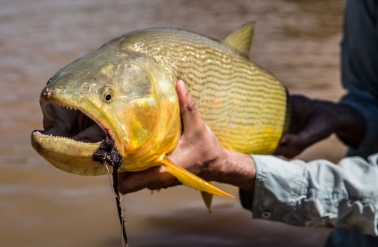
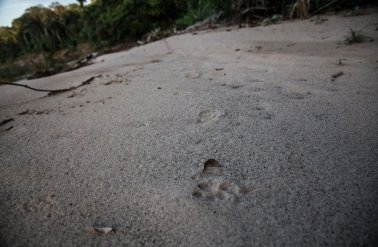
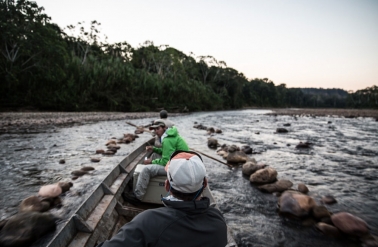
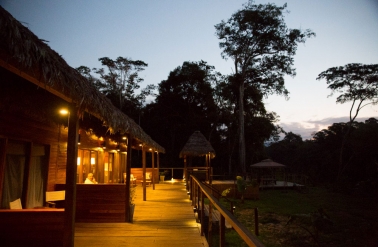
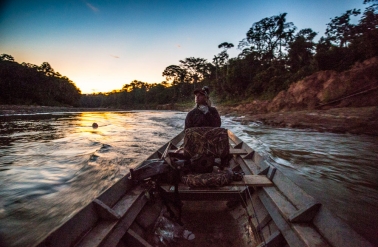
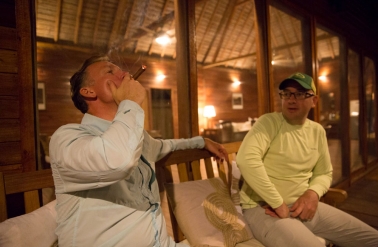
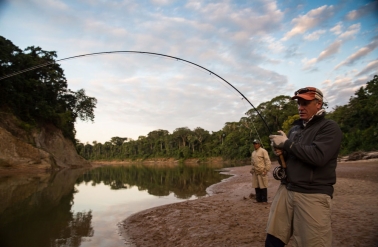
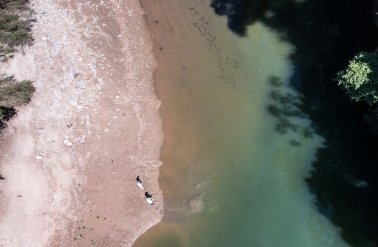
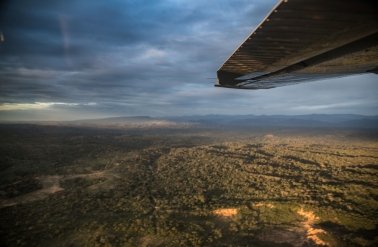
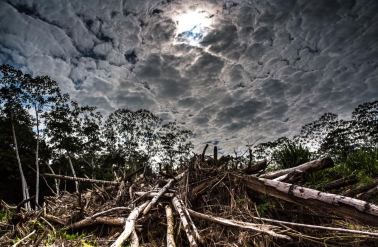
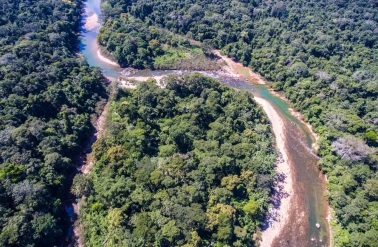
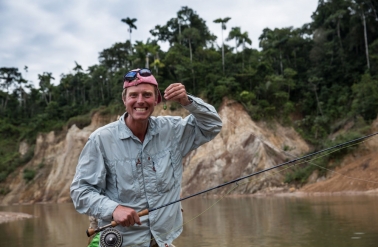
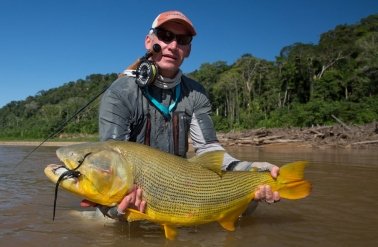
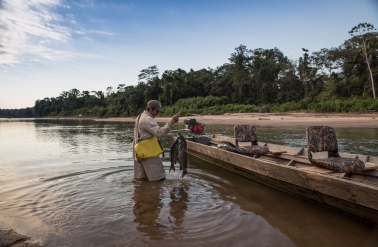
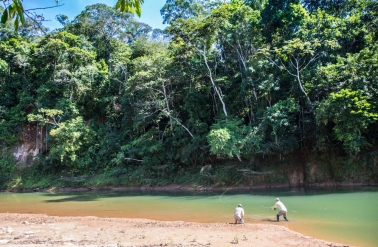
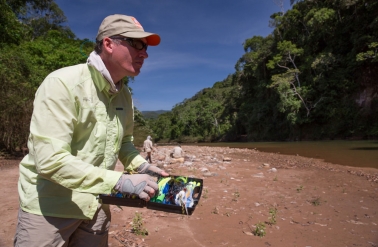
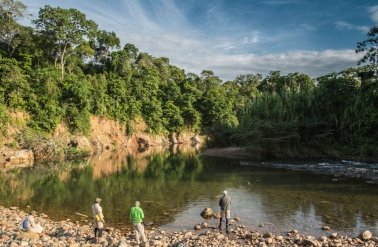
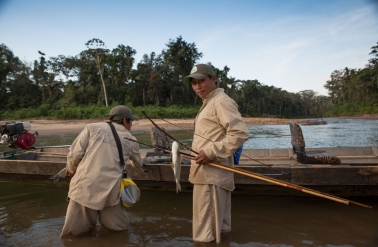
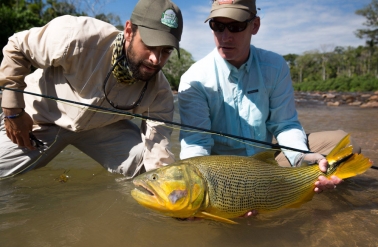
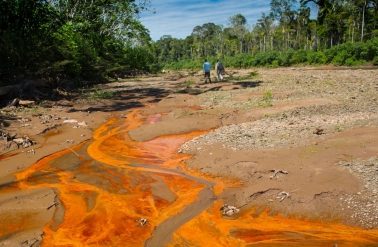
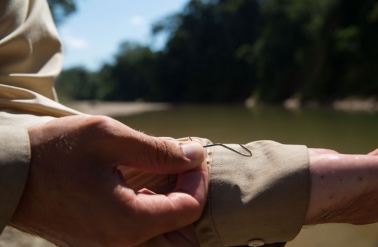
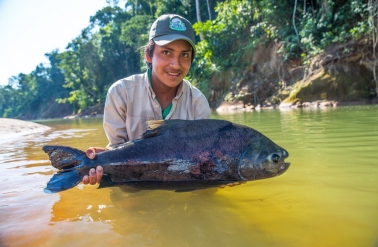
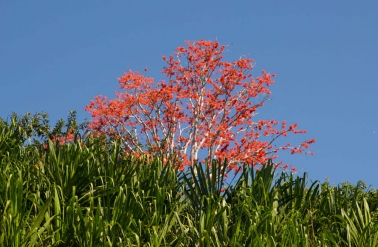
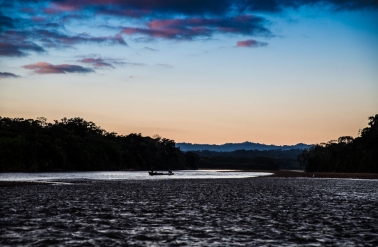
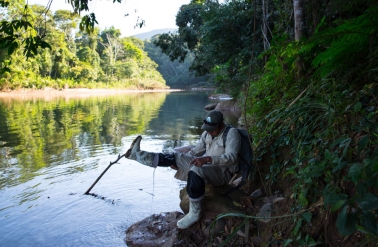
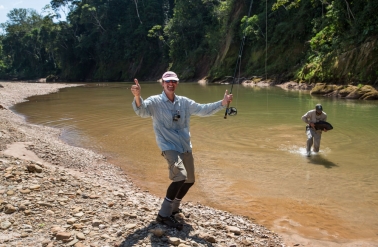
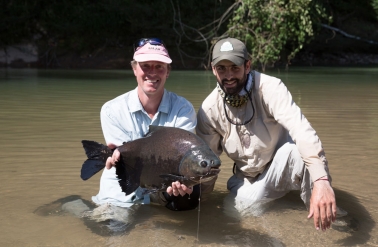
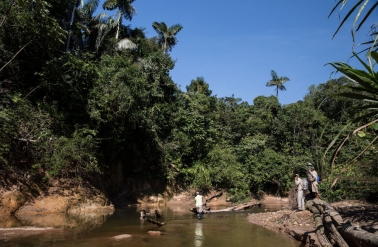
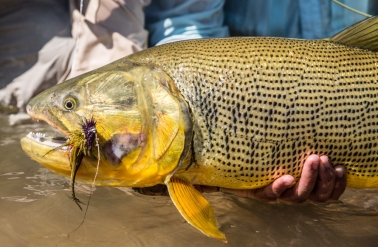
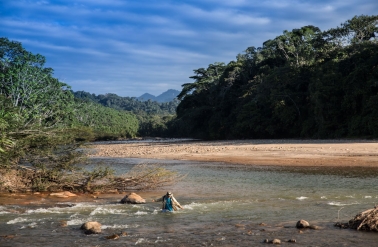
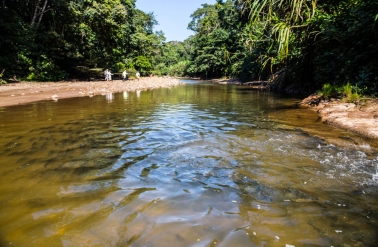
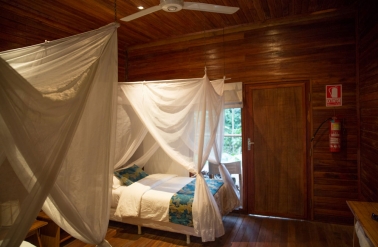
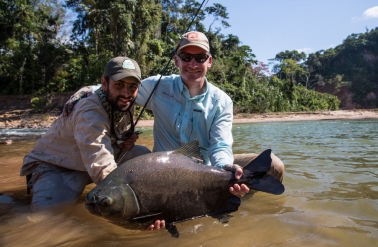
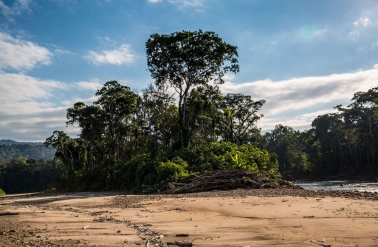
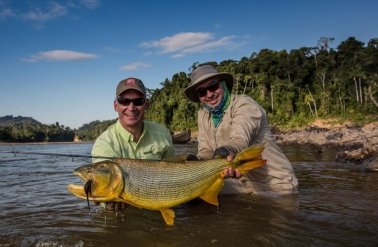
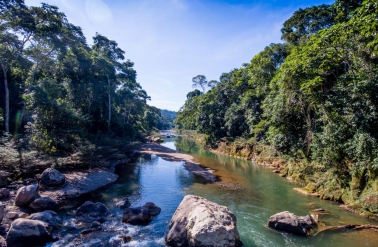
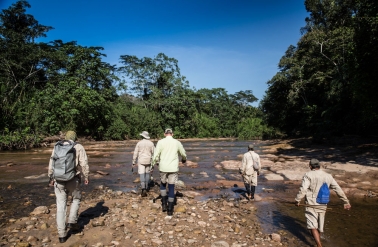
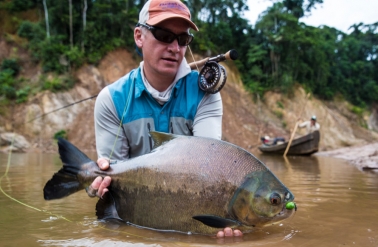
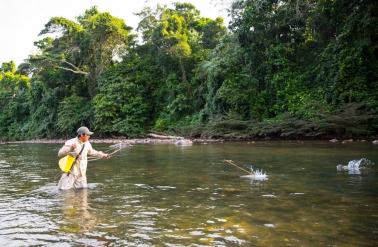
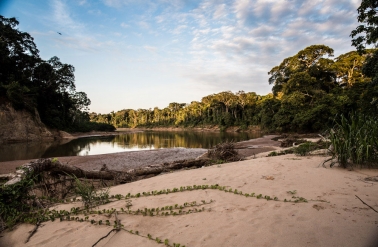
Our Aim
Our Aim is to share our combined knowledge of fly fishing holidays and fly fishing vacations around the world to make your next river fishing, lake fishing or salt-water fly fishing holiday the best ever.
Our Promise
We do not charge a commission over and above the standard rates set by a fishing lodge.
Our advice and experience is based on first hand knowledge of the lodges we recommend.
We will always offer you any currently available promotions or discounts.
Our information is based on personal experience and is unbiased towards any lodge or operation.
We will always strive to ensure that your fishing trip is optimised to meet both the best seasonal conditions.
